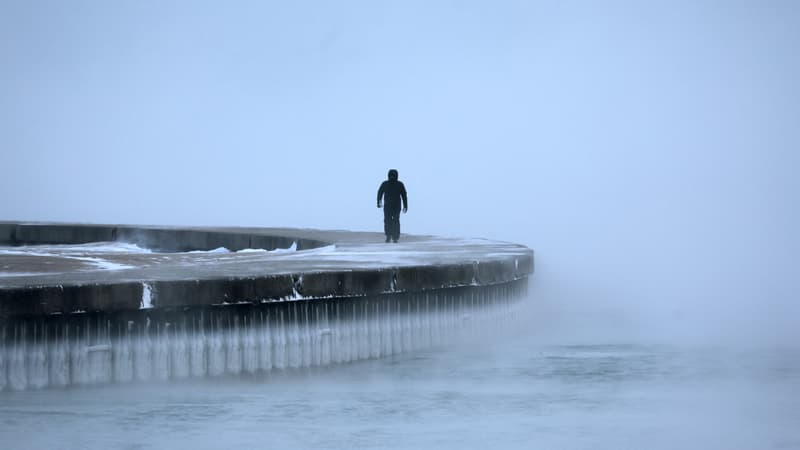Christmas weekend is turned upside down for millions of Americans as they face a severe winter storm, accompanied by extreme temperatures, which has left many roads impassable, canceled thousands of flights and killed at least 17 people.
About 530,000 homes were still without power on Saturday around 10:00 p.m. GMT (up from 1.5 million the day before), according to Poweroutage.us, particularly in North Carolina and Maine, where temperatures were greatly negative measure.
The US National Weather Service (NWS) warned that the cold posed a deadly risk and urged Americans in affected areas to stay indoors. On Friday, due to the wind, the felt temperature dropped to -48°C, according to the same source.
“In the most affected places” there are no “emergency services available”
Since Wednesday night, the central and eastern United States have been battered by this rare-intensity storm, whose polar winds have also brought heavy snowfall, particularly in the Great Lakes region. The situation was particularly impressive around the city of Buffalo, in the state of New York (northeast).
The day before, a travel ban had been pronounced in this region. But hundreds of people were still stuck in their vehicles, “including people who tried to get out late last night,” Erie County Official Mark Poloncarz said at a news conference Saturday. The National Guard was sent to rescue them.
“In the most affected places there are no emergency services available, even in the city of Buffalo,” he explained. Two people died of medical problems because they couldn’t be rescued, she said.
In total, authorities have confirmed at least 17 deaths, in eight states, due to the weather. Some of those deaths have occurred on the roads, which have become very dangerous, such as in Ohio, where four people were killed in storm-related crashes, Gov. Mike DeWine said.
Thousands of canceled flights and power outages
In addition to roads, transportation was severely disrupted across the board just as tens of millions of Americans were looking to reunite with their families for the holiday season. More than 5,500 flights were canceled on Friday, representing 20% of air traffic, US Transportation Secretary Pete Buttigieg tweeted..
More than 2,800 flights were again canceled on Saturday and another 6,600 delayed, according to the specialized site Flightaware.com. But “the biggest shocks are behind us and businesses and airports will gradually recover,” Pete Buttigieg explained.
Thus, many travelers found themselves hoping for a Christmas miracle in the form of a last-minute seat on a plane or train.
In American cities, like in denver or Chicago, shelters have been opened to accommodate people in need to allow them to warm up and protect them from the risk of hypothermia.
Due to the freezing temperatures, the pressure on the electrical network was extremely high. The operator in ten states in the Northeastern United States, PJM, called on the population to reduce their consumption all day Saturday, in order to avoid cuts. Some cities, especially in North Carolina, had to temporarily shut off power due to high demand for electricity, leaving homes without heat.
The storm is expected to last through the weekend.
The storm is expected to last through the weekend, before temperatures return to seasonal norms in the middle of next week, the NWS said.
Until then, “if you must travel or be outdoors, prepare for extreme cold by wearing multiple layers of clothing and covering as much skin as possible,” the NWS wrote Saturday. “In some places, being outside could cause frostbite in a matter of minutes.”
Canada was also affected by the storm: all provinces sounded the weather alert. Hundreds of thousands of people lost power in Ontario and Quebec, and airports in Vancouver, Toronto and Montreal were affected by flight cancellations.
Since Friday afternoon, the storm has become a “bomb low”: a powerful conflict between two air masses, one very cold from the Arctic and the other tropical from the Gulf of Mexico. Low-pressure pumps can produce heavy rain or snowfall, coastal flooding, and hurricane-force winds.
Source: BFM TV


